Table of Contents
2
Federalism
Overview
 In the previous chapter, we noted that vertical division of power among different levels of government is one of the major forms of power-sharing in modern democracies. In this chapter, we focus on this form of power-sharing. It is most commonly referred to as federalism. We begin by describing federalism in general terms. The rest of the chapter tries to understand the theory and practice of federalism in India. A discussion of the federal constitutional provisions is followed by an analysis of the policies and politics that has strengthened federalism in practice. Towards the end of the chapter, we turn to the local government, a new and third tier of Indian federalism.
In the previous chapter, we noted that vertical division of power among different levels of government is one of the major forms of power-sharing in modern democracies. In this chapter, we focus on this form of power-sharing. It is most commonly referred to as federalism. We begin by describing federalism in general terms. The rest of the chapter tries to understand the theory and practice of federalism in India. A discussion of the federal constitutional provisions is followed by an analysis of the policies and politics that has strengthened federalism in practice. Towards the end of the chapter, we turn to the local government, a new and third tier of Indian federalism.What is federalism?
Let us get back to the contrast between Belgium and Sri Lanka that we saw in the last chapter. You would recall that one of the key changes made in the Constitution of Belgium was to reduce the power of the Central Government and to give these powers to the regional governments. Regional governments existed in Belgium even earlier. They had their roles and powers. But all these powers were given to these governments and could be withdrawn by the Central Government. The change that took place in 1993 was that the regional governments were given constitutional powers that were no longer dependent on the central government. Thus, Belgium shifted from a unitary to a federal form of government. Sri Lanka continues to be, for all practical purposes, a unitary system where the national government has all the powers. Tamil leaders want Sri Lanka to become a federal system.
Federalism is a system of government in which the power is divided between a central authority and various constituent units of the country. Usually, a federation has two levels of government. One is the government for the entire country that is usually responsible for a few subjects of common national interest. The others are governments at the level of provinces or states that look after much of the day-to-day administering of their state. Both these levels of governments enjoy their power independent of the other.


Let us look at some of the key features of federalism :
1 There are two or more levels (or tiers) of government.
2 Different tiers of government govern the same citizens, but each tier has its own jurisdiction in specific matters of legislation, taxation and administration.
3 The jurisdictions of the respective levels or tiers of government are specified in the constitution. So the existence and authority of each tier of government is constitutionally guaranteed.
4 The fundamental provisions of the constitution cannot be unilaterally changed by one level of government. Such changes require the consent of both the levels of government.
5 Courts have the power to interpret the constitution and the powers of different levels of government. The highest court acts as an umpire if disputes arise between different levels of government in the exercise of their respective powers.
6 Sources of revenue for each level of government are clearly specified to ensure its financial autonomy.
7 The federal system thus has dual objectives: to safeguard and promote unity of the country, while at the same time accommodate regional diversity. Therefore, two aspects are crucial for the institutions and practice of federalism. Governments at different levels should agree to some rules of power-sharing. They should also trust that each would abide by its part of the agreement. An ideal federal system has both aspects : mutual trust and agreement to live together.
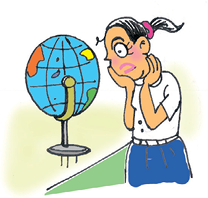
If federalism works only in big countries, why did Belgium adopt it?

Jurisdiction: The area over which someone has legal authority. The area may be defined in terms of geographical boundaries or in terms of certain kinds of subjects.
The second route is where a large country decides to divide its power between the constituent States and the national government. India, Spain and Belgium are examples of this kind of ‘holding together’ federations. In this second category, the central government tends to be more powerful vis-à-vis the States. Very often different constituent units of the federation have unequal powers. Some units are granted special powers.


Some Nepalese citizens were discussing the proposals on the adoption of federalism in their new constitution. This is what some of them said:
Khag Raj: I don’t like federalism. It would lead to reservation of seats for different caste groups as in India.
Sarita: Ours in not a very big country. We don’t need federalism.
Babu Lal: I am hopeful that the Terai areas will get more autonomy if they get their own state government.
Ram Ganesh: I like federalism because it will mean that powers that were earlier enjoyed by the king will now be exercised by our elected representatives.
If you were participating in this conversation what would be your response to each of these? Which of these reflect a wrong understanding of what federalism is?
What makes India a federal country?

What makes India a federal country?
We have earlier seen how small countries like Belgium and Sri Lanka face so many problems of managing diversity. What about a vast country like India, with so many languages, religions and regions? What are the power sharing arrangements in our country?
Let us begin with the Constitution. India had emerged as an independent nation after a painful and bloody partition. Soon after Independence, several princely states became a part of the country. The Constitution declared India as a Union of States. Although it did not use the word federation, the Indian Union is based on the principles of federalism.

Isn’t that strange? Did our constitution makers not know about federalism? Or did they wish to avoid talking about it?
Let us go back to the seven features of federalism mentioned above. We can see that all these features apply to the provisions of the Indian Constitution. The Constitution originally provided for a two-tier system of government, the Union Government or what we call the Central Government, representing the Union of India and the State governments. Later, a third tier of federalism was added in the form of Panchayats and Municipalities. As in any federation, these different tiers enjoy separate jurisdiction. The Constitution clearly provided a three-fold distribution of legislative powers between the Union Government and the State Governments. Thus, it contains three lists:
Union List includes subjects of national importance such as defence of the country, foreign affairs, banking, communications and currency. They are included in this list because we need a uniform policy on these matters throughout the country. The Union Government alone can make laws relating to the subjects mentioned in the Union List.
State List contains subjects of State and local importance such as police, trade, commerce, agriculture and irrigation. The State Governments What makes India a federal country? 2020-21 F eder alism 17 forest, trade unions, marriage, adoption and succession. Both the Union as well as the State Governments can make laws on the subjects mentioned in this list. If their laws conflict with each other, the law made by the Union Government will prevail.
What about subjects that do not fall in any of the three lists? Or subjects like computer software that came up after the constitution was made? According to our constitution, the Union Government has the power to legislate on these ‘residuary’ subjects.
We noted above that most federations that are formed by ‘holding together’ do not give equal power to its constituent units. Thus, all States in the Indian Union do not have identical powers. Some States enjoy a special status. States such as Assam, Nagaland, Arunachal Pradesh and Mizoram enjoy special powers under certain provisions of the Constitution of India (Article 371) due to their peculiar social and historical circumstances. These special powers are especially enjoyed in relation to the protection of land rights of indigenous peoples, their culture and also preferential employment in government services. Indians who are not permanent residents of this State cannot buy land or house here. Similar special provisions exist for some other States of India as well.
There are some units of the Indian Union which enjoy very little power. These are areas which are too small to become an independent State but which could not be merged with any of the existing States. These areas, like Chandigarh, or Lakshadweep or the capital city of Delhi, are called Union Territories. These territories do not have the powers of a State. The Central Government has special powers in running these areas.

If agriculture and commerce are state subjects, why do we have ministers of agriculture and commerce in the Union cabinet?
This sharing of power between the Union Government and the State governments is basic to the structure of the Constitution. It is not easy to make changes to this power sharing arrangement. The Parliament cannot on its own change this arrangement. Any change to it has to be first passed by both the Houses of Parliament with at least two-thirds majority. Then it has to be ratified by the legislatures of at least half of the total States.
The judiciary plays an important role in overseeing the implementation of constitutional provisions and procedures. In case of any dispute about the division of powers, the High Courts and the Supreme Court make a decision. The Union an d State governments have the power to raise resources by levying taxes in order to carry on the government and the responsibilities assigned to each of them.


Listen to one national and one regional news bulletin broadcast by All India Radio daily for one week. Make a list of news items related to government policies or decisions by classifying these into the following categories:
News items that relate only to the Central Government,
News items that relate only to your or any other State Government,
News items about the relationship between the Central and State Governments.


Pokharan, the place where India conducted its nuclear tests, lies in Rajasthan. Suppose the Government of Rajasthan was opposed to the Central Government’s nuclear policy, could it prevent the Government of India from conducting the nuclear tests?
Suppose the Government of Sikkim plans to introduce new textbooks in its schools. But the Union Government does not like the style and content of the new textbooks. In that case, does the state government need to take permission from the Union Government before these textbooks can be launched?
Suppose the Chief Ministers of Andhra Pradesh, Chhattisgarh and Orissa have different policies on how their state police should respond to the naxalites. Can the Prime Minister of India intervene and pass an order that all the Chief Ministers will have to obey?


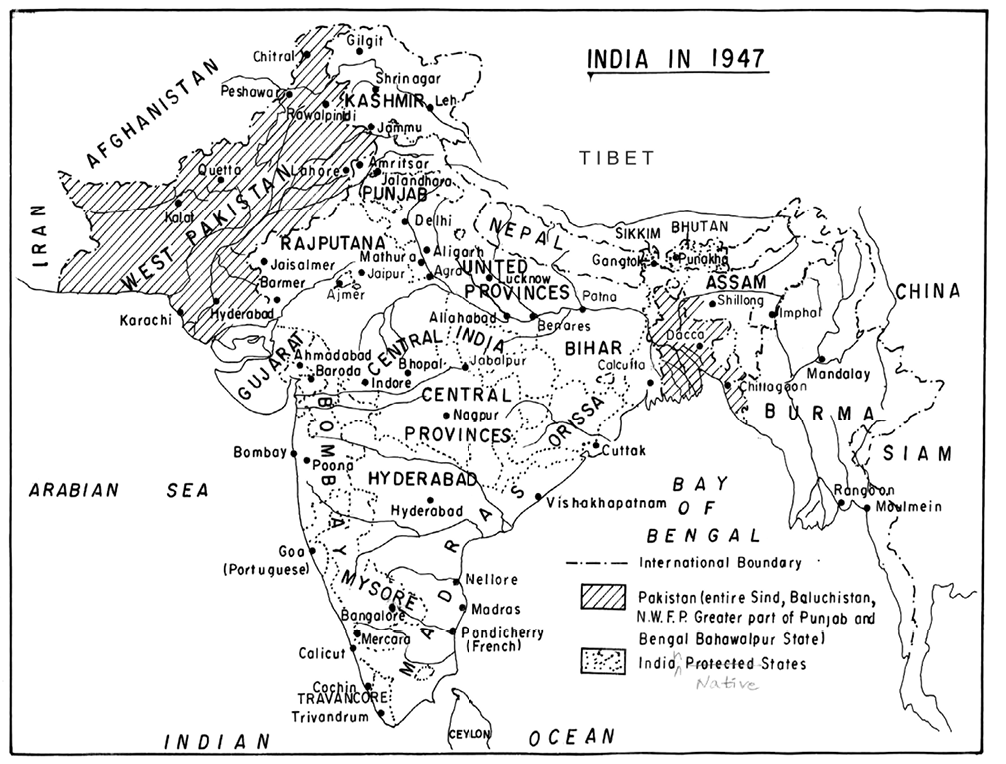
How is federalism practised?
Linguistic States
The creation of linguistic States was the first and a major test for democratic politics in our country. If you look at the political map of India when it began its journey as a democracy in 1947 and that of 2019, you will be surprised by the extent of the changes. Many old States have vanished and many new States have been created. Areas, boundaries and names of the States have been changed.
In 1947, the boundaries of several old States of India were changed in order to create new States. This was done to ensure that people who spoke the same language lived in the same State. Some States were created not on the basis of language but to recognise differences based on culture, ethnicity or geography. These include States like Nagaland, Uttarakhand and Jharkhand

When the demand for the formation of States on the basis of language was raised, some national leaders feared that it would lead to the disintegration of the country. The Central Government resisted linguistic States for some time. But the experience has shown that the formation of linguistic States has actually made the country, more united. It has also made administration easier.
Language policy
A second test for Indian federation is the language policy. Our Constitution did not give the status of national language to any one language. Hindi was identified as the official language. But Hindi is the mother tongue of only about 40 per cent of Indians. Therefore, there were many safeguards to protect other languages. Besides Hindi, there are 21 other languages recognised as Scheduled Languages by the Constitution. A candidate in an examination conducted for the Central Government positions may opt to take the examination in any of these languages. States too have their own official languages. Much of the government work takes place in the official language of the concerned State.
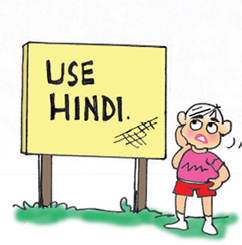
Why Hindi? Why not Bangla or Telugu?
Unlike Sri Lanka, the leaders of our country adopted a very cautious attitude in spreading the use of Hindi. According to the Constitution, the use of English for official purposes was to stop in 1965. However, many non-Hindi speaking States demanded that the use of English continue. In Tamil Nadu, this movement took a violent form. The Central Government responded by agreeing to continue the use of English along with Hindi for official purposes. Many critics think that this solution favoured the English-speaking elite. Promotion of Hindi continues to be the official policy of the Government of India. Promotion does not mean that the Central Government can impose Hindi on States where people speak a different language. The flexibility shown by Indian political leaders helped our country avoid the kind of situation that Sri Lanka finds itself in.
Centre-State relations
Restructuring the Centre-State relations is one more way in which federalism has been strengthened in practice. How the constitutional arrangements for sharing power work in reality depends to a large extent on how the ruling parties and leaders follow these arrangements. For a long time, the same party ruled both at the Centre and in most of the States. This meant that the State governments did not exercise their rights as autonomous federal units. As and when the ruling party at the State level was different, the parties that ruled at the Centre tried to undermine the power of the States. In those days, the Central Government would often misuse the Constitution to dismiss the State governments that were controlled by rival parties. This undermined the spirit of federalism.
Coalition government: A government formed by the coming together of at least two political parties. Usually partners in a coalition form a political alliance and adopt a common programme.
All this changed significantly after 1990. This period saw the rise of regional political parties in many States of the country. This was also the beginning of the era of coalition governments at the Centre. Since no single party got a clear majority in the Lok Sabha, the major national parties had to enter into an alliance with many parties including several regional parties to form a government at the Centre. This led to a new culture of power sharing and respect for the autonomy of State Governments. This trend was supported by a major judgement of the Supreme Court that made it difficult for the Central Government to dismiss state governments in an arbitrary manner. Thus, federal power sharing is more effective today than it was in the early years after the Constitution came into force.
The States Plead for More Powers

© Kutty - Laughing with Kutty
Perils of Running a Coalition Government
Here are two cartoons showing the relationship between Centre and States. Should the State go to the Centre with a begging bowl? How can the leader of a coalition keep the partners of government satisfied?
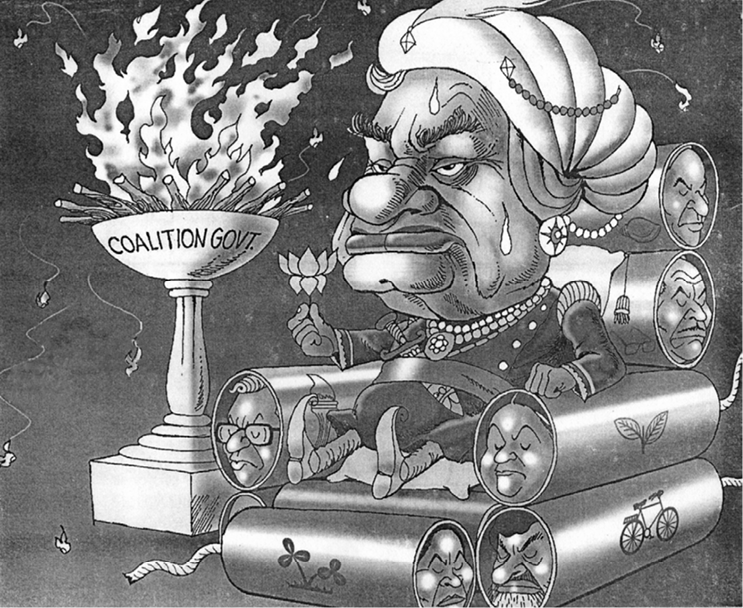
© Ajith Ninan - India Today Book of Cartoons

Are you suggesting that regionalism is good for our democracy? Are you serious?
Linguistic diversity of India
How many languages do we have in India? The answer depends on how one counts it. The latest information that we have is from the Census of India held in 2011. This census recorded more than 1300 distinct languages which people mentioned as their mother tongues. These languages were grouped together under some major languages. For example languages like Bhojpuri, Magadhi, Bundelkhandi, Chhattisgarhi, Rajasthani and many others were grouped together under ‘Hindi’. Even after this grouping, the Census found 121 major languages. Of these 22 languages are now included in the Eighth Schedule of the Indian Constitution and are therefore called ‘Scheduled Languages’. Others are called ‘non-Scheduled Languages’. In terms of languages, India is perhaps the most diverse country in the world.
A look at the enclosed table makes it clear that no one language is the mother tongue of the majority of our population. The largest language, Hindi, is the mother tongue of only about 44 per cent Indians. If we add to that all those who knew Hindi as their second or third language, the total number was still less than 50 per cent in 2011. As for English, only 0.02 per cent Indians recorded it as their mother tongue. Another 11 per cent knew it as a second or third language. Read this table carefully, but you need not memorise it. Just do the following:
Make a bar or pie chart on the basis of this information.
Prepare a map of linguistic diversity of India by shading the region where each of these languages is spoken on the map of India.
Find out about any three languages that are spoken in India but are not included in this table.



Read the following excerpts from an article by noted historian, Ramachandra Guha, that appeared in the Times of India on November 1, 2006:
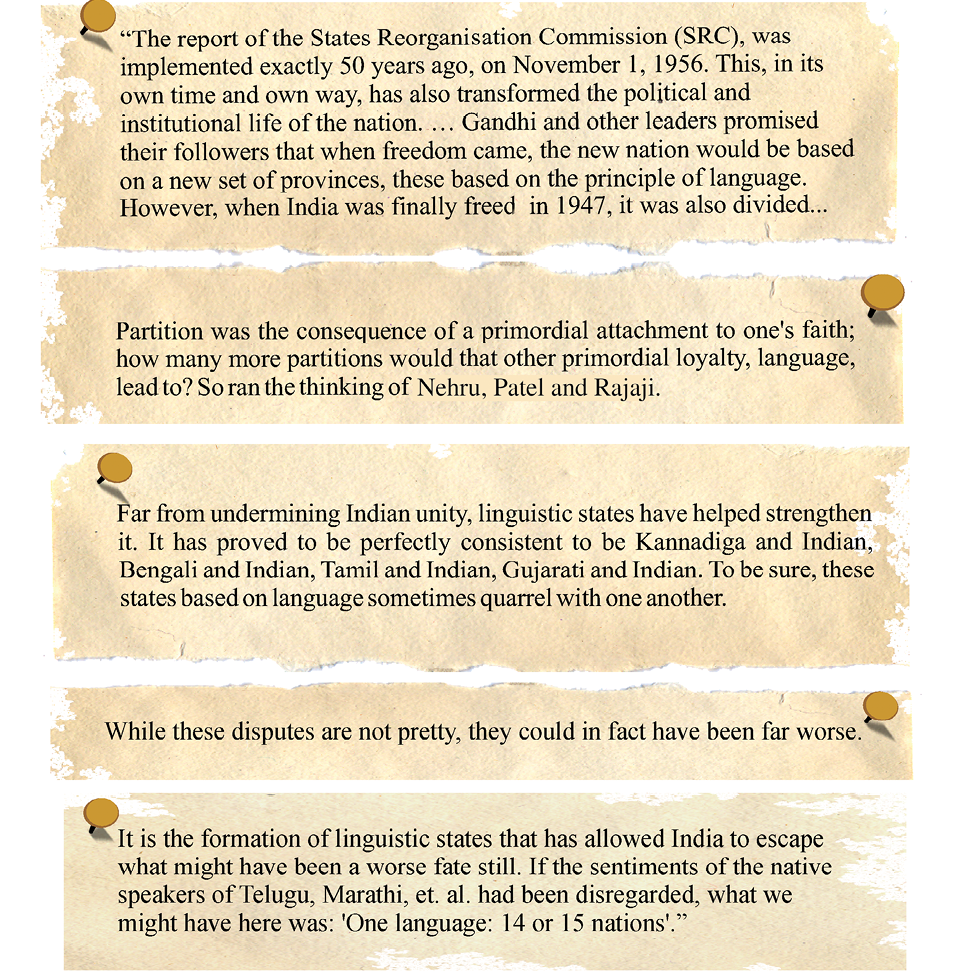
Take the example of your own state or any other state that was affected by linguistic reorganisation. Write a short note for or against the argument given by the author here on the basis of that example.
Decentralisation in India
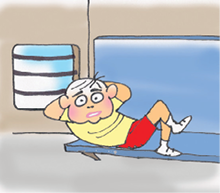
So, we are like a three-tier coach in a train! I always prefer the lower berth!
We noted above that federal governments have two or more tiers of governments. We have so far discussed the two-tiers of government in our country. But a vast country like India cannot be run only through these two-tiers. States in India are as large as independent countries of Europe. In terms of population, Uttar Pradesh is bigger than Russia, Maharashtra is about as big as Germany. Many of these States are internally very diverse. There is thus a need for power sharing within these States. Federal power sharing in India needs another tier of government, below that of the State governments. This is the rationale for decentralisation of power. Thus, resulted a third-tier of government, called local government.
When power is taken away from Central and State governments and given to local government, it is called decentralisation. The basic idea behind decentralisation is that there are a large number of problems and issues which are best settled at the local level. People have better knowledge of problems in their localities. They also have better ideas on where to spend money and how to manage things more efficiently. Besides, at the local level it is possible for the people to directly participate in decision making. This helps to inculcate a habit of democratic participation. Local government is the best way to realise one important principle of democracy, namely local self-government.
The need for decentralisation was recognised in our Constitution. Since then, there have been several attempts to decentralise power to the level of villages and towns. Panchayats in villages and municipalities in urban areas were set up in all the States. But these were directly under the control of state governments. Elections to these local governments were not held regularly. Local governments did not have any powers or resources of their own. Thus, there was very little decentralisation in effective terms.
A major step towards decentra-lisation was taken in 1992. The Constitution was amended to make the third-tier of democracy more powerful and effective.
Now it is constitutionally mandatory to hold regular elections to local government bodies.
Seats are reserved in the elected bodies and the executive heads of these institutions for the Scheduled Castes, Scheduled Tribes and Other Backward Classes.
At least one-third of all positions are reserved for women.
An independent institution called the State Election Commission has been created in each State to conduct panchayat and municipal elections.
The State governments are required to share some powers and revenue with local government bodies. The nature of sharing varies from State to State.
Rural local government is popularly known by the name panchayati raj. Each village, or a group of villages in some States, has a gram panchayat. This is a council consisting of several ward members, often called panch, and a president or sarpanch. They are directly elected by all the adult population living in that ward or village. It is the decision-making body for the entire village. The panchayat works under the overall supervision of the gram sabha. All the voters in the village are its members. It has to meet at least twice or thrice in a year to approve the annual budget of the gram panchayat and to review the performance of the gram panchayat.
The local government structure goes right up to the district level. A few gram panchayats are grouped together to form what is usually called a panchayat samiti or block or mandal. The members of this representative body are elected by all the panchyat members in that area. All the panchayat samitis or mandals in a district together constitute the zilla (district) parishad. Most members of the zilla parishad are elected. Members of the Lok Sabha and MLAs of that district and some other officials of other district level bodies are also its members. Zilla parishad chairperson is the political head of the zilla parishad.
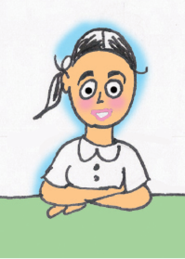
Prime Minister runs the country. Chief Minister runs the state. Logically, then, the chairperson of Zilla Parishad should run the district. Why does the D.M. or Collector administer the district?
Similarly, local government bodies exist for urban areas as well. Municipalities are set up in towns. Big cities are constituted into municipal corporations. Both municipalities and municipal corporations are controlled by elected bodies consisting of people’s representatives. Municipal chairperson is the political head of the municipality. In a municipal corporation such an officer is called the mayor.

What do these newspaper clippings have to say about efforts of decentralisation in India?

This new system of local government is the largest experiment in democracy conducted anywhere in the world. There are now about 36 lakh elected representatives in the panchayats and municipalities etc., all over the country. This number is bigger than the population of many countries in the world. Constitutional status for local government has helped to deepen democracy in our country. It has also increased women’s representation and voice in our democracy. At the same time, there are many difficulties. While elections are held regularly and enthusiastically, gram sabhas are not held regularly. Most state governments have not transferred significant powers to the local governments. Nor have they given adequate resources. We are thus still a long way from realising the ideal of self-government.

 Find out about the local government in the village or town you live in.
Find out about the local government in the village or town you live in.If you live in a village, find out the names of the following: your panch or ward member, your sarpanch, your panchayat samiti, the chairperson of your zilla parishad. Also find out when did the last meeting of the gram sabha take place and how many people took part in that.
If you live in urban areas, find out the name of your municipal councillor, and the municipal chairperson or mayor. Also find out about the budget of your municipal corporation, municipality and the major items on which money was spent.

 Exercises
Exercises
1. Locate the following States on a blank outline political map of India: Manipur, Sikkim, Chhattisgarh and Goa.
2. Identify and shade three federal countries (other than India) on a blank outline political map of the world.
3. Point out one feature in the practice of federalism in India that is similar to and one feature that is different from that of Belgium.
4. What is the main difference between a federal form of government and a unitary one? Explain with an example.
5. State any two differences between the local government before and after the Constitutional amendment in 1992.
6. Fill in the blanks:
Since the United States is a ___________________ type of federation, all the constituent States have equal powers and States are ______________vis-à-vis the federal government. But India is a _____________________ type of federation and some States have more power than others. In India, the ____________ government has more powers.
7. Here are three reactions to the language policy followed in India. Give an argument and an example to support any of these positions.
Sangeeta: The policy of accommodation has strengthened national unity.
Arman: Language-based States have divided us by making everyone conscious of their language.
Harish: This policy has only helped to consolidate the dominance of English over all other languages.
8. The distinguishing feature of a federal government is:
(a) National government gives some powers to the provincial governments.
(b) Power is distributed among the legislature, executive and judiciary.
(c) Elected officials exercise supreme power in the government.
(d) Governmental power is divided between different levels of government.
9. A few subjects in various Lists of the Indian Constitution are given here. Group them under the Union, State and Concurrent Lists as provided in the table below.
A. Defence; B. Police; C. Agriculture; D. Education;
E. Banking; F. Forests; G. Communications; H. Trade; I. Marriages

10. Examine the following pairs that give the level of government in India and the powers of the government at that level to make laws on the subjects mentioned against each. Which of the following pairs is not correctly matched?

11. Match List I with List II and select the correct answer using the codes given below the lists:


12. Consider the following two statements.
A. In a federation the powers of the federal and provincial governments are clearly demarcated.
B. India is a federation because the powers of the Union and State Governments are specified in the Constitution and they have exclusive jurisdiction on their respective subjects.
C. Sri Lanka is a federation because the country is divided into provinces.
D. India is no longer a federation because some powers of the States have been devolved to the local government bodies.
Which of the statements given above are correct?
(a) A, B and C (b) A, C and D (c) A and B only (d) B and C only